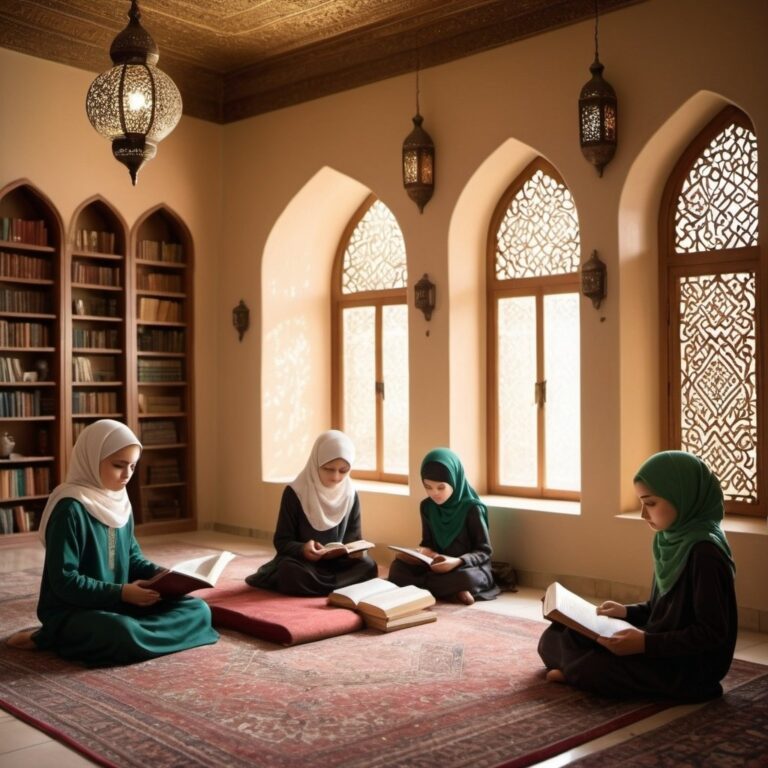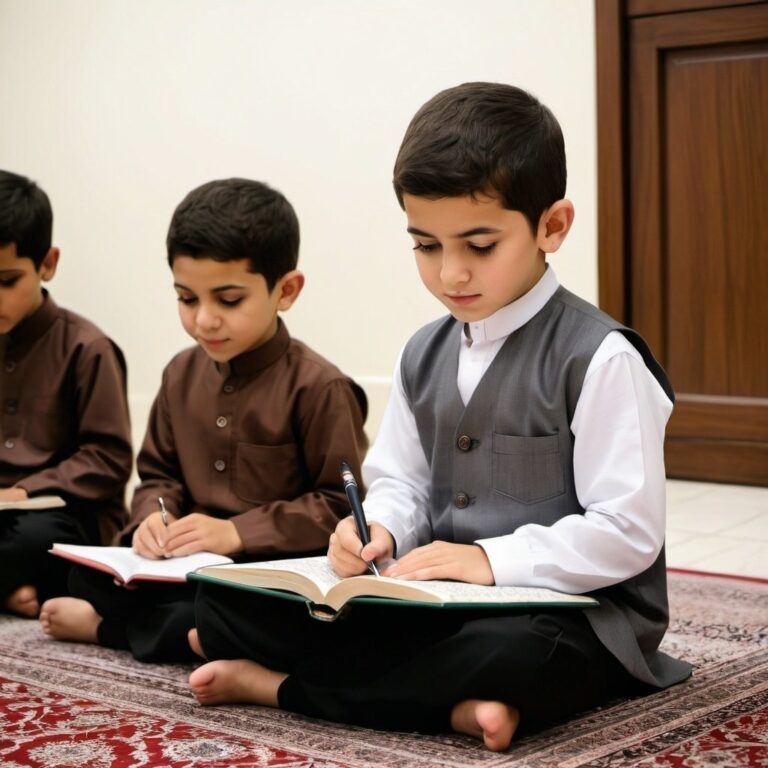Embracing the Blessings of DhulHijjah: A Comprehensive Guide for Muslims and Pilgrims
DhulHijjah, the twelfth and very last month of the Islamic lunar calendar, holds mammoth significance for Muslims around the sector. This sacred month is marked by a sequence of respected sports and rituals, most significantly the Hajj pilgrimage, which is one of the Five Pillars of Islam. Additionally, DhulHijjah encompasses fasting, charity, and the party of Eid al-Adha, all of which offer non secular enrichment and rewards.
In this complete guide, we will explore the diverse sports and rituals associated with DhulHijjah. Whether you are a pilgrim embarking on Hajj or a Muslim looking for to maximize the benefits of this holy month, this newsletter ambitions to provide valuable insights, sensible recommendations, and solutions to frequently requested questions to help you navigate and embrace the profound experiences of DhulHijjah.
The Hajj Pilgrimage
Understanding Hajj: The Journey of a Lifetime
Hajj, an annual pilgrimage to the holy city of Mecca in Saudi Arabia, is a profound spiritual journey that every Muslim should adopt as a minimum as soon as of their lifetime if they may be bodily and financially capable. This pilgrimage, finished for the duration of the Islamic month of DhulHijjah, is a powerful manifestation of religion, solidarity, and devotion.
The Rituals of Hajj: A Detailed Guide
The Hajj pilgrimage consists of several key rituals that span over five days, each carrying deep non secular importance.
- Ihram: Pilgrims input a nation of non secular purity and don easy white garments referred to as Ihram, symbolizing equality and humility.
- Tawaf: Pilgrims circumambulate the Kaaba, the holiest site in Islam, seven times in a counter-clockwise course.
- Sa’i: This ritual includes taking walks seven instances among the hills of Safa and Marwah, commemorating Hagar’s look for water for her son Ishmael.
- Arafat: Pilgrims accumulate on the apparent of Arafat, status in prayer and supplication, seeking forgiveness and mercy from Allah.
- Muzdalifah: After sunset on the Day of Arafat, pilgrims pass to Muzdalifah, in which they spend the night below the open sky and acquire pebbles for the next ritual.
- Ramy al-Jamarat: Pilgrims throw pebbles at 3 pillars in Mina, symbolizing the rejection of Satan’s temptations.
- Eid al-Adha: This competition marks the end of Hajj, at some stage in which pilgrims perform the Qurbani (sacrifice) and distribute meat to the needy.
Personal Narratives: Pilgrims’ Experiences
To upload depth to our expertise of Hajj, allow’s hear from pilgrims who have undertaken this sacred adventure:
- Amina’s Journey: “Hajj changed into a transformative revel in for me. The harmony and sense of belonging among tens of millions of fellow Muslims were overwhelming. Every step felt like a step in the direction of Allah.”
- Khalid’s Reflection: “The Day of Arafat changed into the highlight of my Hajj. Standing in prayer and repentance, I felt a profound reference to my Creator. It turned into a day of non secular renewal and forgiveness.”
Fasting on the Day of Arafah
The Significance of the Day of Arafah
The Day of Arafah, the ninth day of DhulHijjah, is considered one of the holiest days in Islam. It is the day while pilgrims gather on the apparent of Arafat to seek Allah’s forgiveness and mercy. For those not performing Hajj, fasting in this day holds large rewards.
Benefits of Fasting at the Day of Arafah
Fasting on the Day of Arafah is incredibly advocated and brings numerous religious and physical blessings:
- Forgiveness of Sins: The Prophet Muhammad (peace be upon him) said, “Fasting at the Day of Arafah expiates the sins of the previous 12 months and the coming year.” This fast gives a completely unique possibility for Muslims to searching for forgiveness and start anew.
- Spiritual Purification: Fasting enhances self-discipline, mindfulness, and a sense of closeness to Allah. It is a time for reflection, prayer, and in search of Allah’s steering.
- Physical Health: Fasting has been proven to have various fitness blessings, such as improved metabolism, detoxing, and superior intellectual readability.
Practical Tips for Fasting on the Day of Arafah
To make the maximum of this blessed rapid, consider the following pointers:
- Prepare Mentally and Physically: Set your purpose the night time before and mentally prepare your self for an afternoon of devotion. Ensure you have a nutritious pre-sunrise meal (Suhoor) to maintain you for the duration of the day.
- Engage in Worship: Dedicate the day to acts of worship which includes reciting the Quran, making dua (supplication), and appearing greater prayers. Increase your remembrance of Allah (dhikr) and are trying to find His forgiveness.
- Stay Hydrated and Rested: Stay hydrated and keep away from strenuous activities. Take quick breaks and relaxation whilst needed to keep your strength levels.
Qurbani (Sacrifice)
Understanding Qurbani: A Sacred Tradition
Qurbani, additionally referred to as Udhiya, is the act of sacrificing an animal (usually a sheep, goat, cow, or camel) to commemorate the willingness of Prophet Ibrahim (Abraham) to sacrifice his son Ismail (Ishmael) as an act of obedience to Allah. This ritual is accomplished at some stage in the days of Eid al-Adha, the tenth to 12th of DhulHijjah.
The History and Significance of Qurbani
The tale of Qurbani is deeply rooted in Islamic tradition:
- Prophet Ibrahim’s Test of Faith: Allah commanded Prophet Ibrahim to sacrifice his cherished son Ismail. Both father and son submitted to Allah’s will, but Allah changed Ismail with a ram, sparing his life. This act of devotion and submission is commemorated through Qurbani.
- Symbol of Sacrifice and Obedience: Qurbani symbolizes the spirit of sacrifice, obedience, and gratitude to Allah. It reminds Muslims of the significance of selflessness and devotion.
How to Perform Qurbani Correctly
Performing Qurbani involves several critical steps:
- Select a Suitable Animal: Choose a wholesome animal that meets the criteria laid out in Islamic law. The animal must be unfastened from defects and of a certain age.
- Recite the Intention (Niyyah): Before performing the sacrifice, make the intention to your heart that you are carrying out the Qurbani as an act of worship to Allah.
- Slaughter the Animal Humanely: The animal have to be slaughtered in a humane manner, following the guidelines of Islamic law. The call of Allah need to be invoked (via saying “Bismillah, Allahu Akbar”) before the act.
- Distribute the Meat: Divide the beef into three elements: one-0.33 for your self and your circle of relatives, one-1/3 for pals and acquaintances, and one-0.33 for the less lucky.
Zakat and Sadaqah all through DhulHijjah
The Importance of Charity in Islam
Charity holds a unique location in Islam, and giving all through DhulHijjah is mainly profitable. Both Zakat (compulsory charity) and Sadaqah (voluntary charity) are way of purifying one’s wealth and assisting the ones in want.
Calculating and Distributing Zakat
Zakat is a mandatory act of worship and entails giving 2.Five% of one’s collected wealth to the ones in want. Here’s a way to calculate and distribute Zakat:
- Identify Zakatable Assets: Calculate the value of your belongings, inclusive of savings, investments, commercial enterprise merchandise, and every other sources of wealth that have been to your ownership for a lunar 12 months.
- Determine the Nisab Threshold: Ensure your wealth meets or exceeds the Nisab threshold, that’s the minimal amount required to be eligible for Zakat. The Nisab is equal to the fee of 85 grams of gold or 595 grams of silver.
- Distribute the Zakat: Allocate the calculated Zakat amount to eligible recipients, along with the poor, needy, orphans, and those in debt. You can also make a contribution to charitable businesses that facilitate the distribution of Zakat.
Giving Sadaqah: Acts of Voluntary Charity
Sadaqah, or voluntary charity, may be given at any time and in any amount. It encompasses a huge variety of acts, from monetary donations to acts of kindness. Here are some ways to present Sadaqah throughout DhulHijjah:
- Monetary Donations: Contribute to charitable organizations, guide community tasks, or without delay assist people and households in want.
- Acts of Kindness: Small acts of kindness, along with supporting a neighbor, feeding the hungry, or offering educational aid, are all taken into consideration Sadaqah.
- Supporting Social Causes: Use your sources to help reasons that promote social justice, training, healthcare, and environmental sustainability.
Eid Al-Adha Celebrations
The Significance of Eid al-Adha
Eid al-Adha, also called the Festival of Sacrifice, is one of the most important Islamic holidays. It marks the fruits of the Hajj pilgrimage and commemorates the willingness of Prophet Ibrahim to sacrifice his son Ismail.
Traditional Customs and Activities
Eid al-Adha is a time of joy, gratitude, and network. Here are some conventional customs and sports associated with the birthday party:
- Performing the Eid Prayer: Muslims gather for a special congregational prayer referred to as Salat al-Eid. The prayer is commonly held in open spaces or massive mosques and is accompanied through a sermon (khutbah).
- Qurbani (Sacrifice): As cited earlier, the act of Qurbani is completed throughout Eid al-Adha. The meat is then allotted among family, friends, and people in want.
- Sharing and Feasting: Eid al-Adha is a time for sharing and feasting. Families come collectively to experience festive meals, change gifts, and have fun with cherished ones.
Embracing the Spirit of Eid
Eid al-Adha isn’t simplest approximately rituals however also approximately embodying the spirit of sacrifice, gratitude, and compassion. Here are a few approaches to include the essence of Eid:
- Reflect at the Story of Prophet Ibrahim: Take time to mirror at the tale of Prophet Ibrahim and his unwavering religion and obedience to Allah. Let this mirrored image encourage you to reinforce your very own religion and dedication.
- Show Gratitude: Express gratitude for the blessings on your life. Use this occasion to thank Allah for His mercy and guidance.
- Foster Community Bonds: Reach out to buddies, associates, and members of your community. Eid is a time to strengthen bonds, proportion pleasure, and enlarge a assisting hand to those in want.
Frequently Asked Questions (FAQs) about DhulHijjah
What is DhulHijjah?
DhulHijjah is the 12th and final month of the Islamic lunar calendar. It is a sacred month that holds sizeable religious importance for Muslims, as it includes the Hajj pilgrimage and Eid al-Adha.
What is the importance of DhulHijjah?
DhulHijjah is a month of huge spiritual significance. It is a time for Muslims to perform Hajj, interact in acts of worship, and seek Allah’s benefits and forgiveness.
When does DhulHijjah start?
The genuine start date of DhulHijjah varies every year primarily based at the sighting of the moon. It is determined by using the Islamic lunar calendar.
What is Hajj?
Hajj is an annual pilgrimage to Mecca that is compulsory for Muslims to perform at least as soon as in their lifetime if they’re physically and financially capable. It is one of the Five Pillars of Islam.
Who is needed to perform Hajj?
Hajj is compulsory for person Muslims who’re physically and financially capable of mission the journey. It is a once-in-a-lifetime duty.
What are the key rituals of Hajj?
The key rituals of Hajj encompass coming into the country of Ihram, appearing Tawaf across the Kaaba, acting Sa’i among Safa and Marwah, standing at Arafat, spending the night at Muzdalifah, appearing Ramy al-Jamarat, and imparting the Qurbani sacrifice.
What is the Day of Arafah?
The Day of Arafah is the 9th day of DhulHijjah. It is a day while pilgrims collect on the plain of Arafat to are searching for Allah’s forgiveness and mercy. Fasting on this day is noticeably recommended for non-pilgrims.
What are the benefits of fasting at the Day of Arafah?
Fasting at the Day of Arafah expiates the sins of the previous year and the coming 12 months. It is an afternoon of religious purification and searching for Allah’s forgiveness.
What is Qurbani?
Qurbani, additionally called Udhiya, is the act of sacrificing an animal to commemorate the willingness of Prophet Ibrahim to sacrifice his son Ismail. It is executed for the duration of Eid al-Adha.
How is Qurbani done?
Qurbani is performed by slaughtering an animal in a humane way, invoking the call of Allah, and distributing the beef amongst own family, pals, and people in need.
What is Zakat?
Zakat is an compulsory form of charity that entails giving a component of one’s wealth to the ones in need. It is one of the Five Pillars of Islam and is calculated at 2.5% of 1’s accrued wealth.
What is Sadaqah?
Sadaqah is voluntary charity that can be given at any time and in any amount. It encompasses acts of kindness, financial donations, and guide for social causes.
What is Eid al-Adha?
Eid al-Adha, also known as the Festival of Sacrifice, is a first-rate Islamic vacation that commemorates the willingness of Prophet Ibrahim to sacrifice his son Ismail. It marks the culmination of the Hajj pilgrimage and is well known with prayers, feasting, and acts of charity.
Can non-Muslims participate in Eid al-Adha celebrations?
Yes, non-Muslims are welcome to participate in Eid al-Adha celebrations. It is a time of community and generosity, and people from all backgrounds can join within the festivities and find out about Islamic traditions. However, positive religious rituals including Salat al-Eid are typically only executed with the aid of Muslims.
Conclusion
Eid al-Adha is a time for reflection, gratitude, and celebration. As we commemorate the story of Prophet Ibrahim and his son Ismail, allow us to try to embody the values of sacrifice, compassion, and community in our day by day lives. May this Eid deliver pleasure, benefits, and peace to all.Eid Mubarak!












